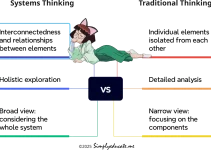
Having taught a management information system course in the past, I thought it would be desirable to put that knowledge into use in view of the many tasks I need to do at home and in the office. Doing so would help me free up time for other productive endeavors, like pursuing my writing hobby and honing my web development skills required to keep this website running.
It is easy to get overwhelmed by all the tasks that need to be done as quickly as possible in an organized manner. Hence, I came up with this personalized computerized information system incorporating available technologies that make tasks easier to handle.
I do hope you find this system useful, too, to avoid burnout, frustration, or exasperation of having to multitask. But we have no choice but to keep ourselves organized to get off stress.
Let’s get to it. But first, let me define what is a computerized information system.
Table of Contents
What is a Computerized Information System?
A personal computerized information system is a software-based tool that helps individuals manage their time more effectively. It is designed to store, organize, and retrieve information related to personal tasks, appointments, deadlines, and goals.
By using a computerized information system, individuals can easily track and prioritize their activities, ensuring that they make the most efficient use of their time.
A personal computerized information system is a software-based tool that helps individuals manage their time more effectively.
One of the key benefits of a computerized information system is its ability to provide reminders and notifications. Users can set up alerts for upcoming deadlines or appointments, ensuring that they never miss an important task. This feature is particularly useful for individuals with busy schedules or those who struggle with time management.
Another important aspect of a computerized information system is its ability to generate reports and analyze data. Users can review their time usage patterns, identify areas of improvement, and make informed decisions about how to allocate their time more effectively. This data-driven approach to time management can lead to increased productivity and better work-life balance.
Using this information as our guide, let’s see how we can set up our personal computerized information system.
8 Steps on How to Have Your Own Personal Computerized Information System
To have your own personal computerized information system, there are several steps you can follow to develop and maintain it effectively. By implementing these steps, you can streamline your time management and improve your productivity.
Let’s explore each step in detail:
1. Choose the right software
The first step in developing your computerized information system is to select the appropriate software. Look for a program that suits your needs and preferences. Consider factors such as user-friendliness, compatibility with your devices, and the features it offers.
Some popular options include digital calendars, task management apps, and project management software. Try them and choose which one suits your needs and budget.
2. Set up your system
Once you have chosen the software, it’s time to set up your system.
Start by creating categories or folders to organize your tasks, appointments, and deadlines. This will help you easily locate and access the information you need. You can create categories based on projects, priorities, or any other criteria that make sense to you.
3. Input your tasks and appointments
Next, input all your tasks and appointments into the system. Be thorough and include both personal and professional commitments. Assign due dates and set reminders for each task or appointment. This will ensure that you stay on top of your schedule and never miss an important deadline.
4. Prioritize your tasks
Once you have entered all your tasks, it’s essential to prioritize them. Determine which tasks are urgent and important and allocate your time accordingly.
Use features like color-coding or labeling to visually distinguish between different levels of priority. This will help you focus on the most critical tasks and avoid wasting time on less important activities.
5. Utilize subsections and tags
To further enhance the organization of your computerized information system, utilize subsections and tags. Subsections allow you to break down larger projects or tasks into smaller, more manageable parts. This makes it easier to track progress and stay organized. Tags, on the other hand, enable you to categorize tasks based on specific criteria, such as client names, project types, or locations. This makes it easier to search for and filter tasks based on your needs.
6. Regularly update and review
To ensure the effectiveness of your computerized information system, it’s crucial to regularly update and review your tasks and appointments. Add new tasks as they arise and remove completed ones.
Review your system daily or weekly to make any necessary adjustments or updates. This will help you stay on track and adapt to changing priorities or deadlines.
7. Analyze and optimize
Another important step in maintaining your computerized information system is to analyze and optimize your time management practices. Utilize the reporting and analysis features of your software to review your time usage patterns.
Identify areas where you can improve efficiency or eliminate time-wasting activities. Use this data-driven approach to make informed decisions about how to allocate your time more effectively.
8. Synch across devices
To ensure seamless access to your computerized information system, sync it across all your devices. This will allow you to view and update your tasks and appointments from anywhere, whether you’re using your computer, smartphone, or tablet. Syncing also ensures that you have the most up-to-date information at all times, eliminating the risk of missing important updates or changes.
By following these steps, you can develop and maintain your own personal computerized information system. This system will help you stay organized, prioritize tasks, and make the most efficient use of your time.
Remember to regularly review and optimize your system to ensure its effectiveness. With a well-maintained computerized information system, you can achieve better time management, increased productivity, and a greater sense of control over your daily activities.
Summary and Conclusion
To summarize the discussion on developing a personal computerized information system for time management, it is important to highlight the main points. By following the steps outlined in the preceding sections, individuals can effectively streamline their time management and improve productivity.
The first step is to choose the right software that suits their needs and preferences. This can include digital calendars, task management apps, or project management software. Once the software is selected, the system should be set up by creating categories or folders to organize tasks, appointments, and deadlines.
Inputting all tasks and appointments into the system and assigning due dates and reminders ensures that individuals stay on top of their schedule. Prioritizing tasks based on urgency and importance helps individuals focus on critical activities. Utilizing subsections and tags further enhances organization and makes it easier to track progress and filter tasks based on specific criteria.
Regularly updating and reviewing the system, as well as analyzing and optimizing time management practices, are crucial for maintaining an effective computerized information system. Syncing the system across devices ensures seamless access and up-to-date information.
In conclusion, by following these steps, individuals can develop and maintain their own personal computerized information system, leading to better time management, increased productivity, and a greater sense of control over daily activities.
Start now and be more productive.



